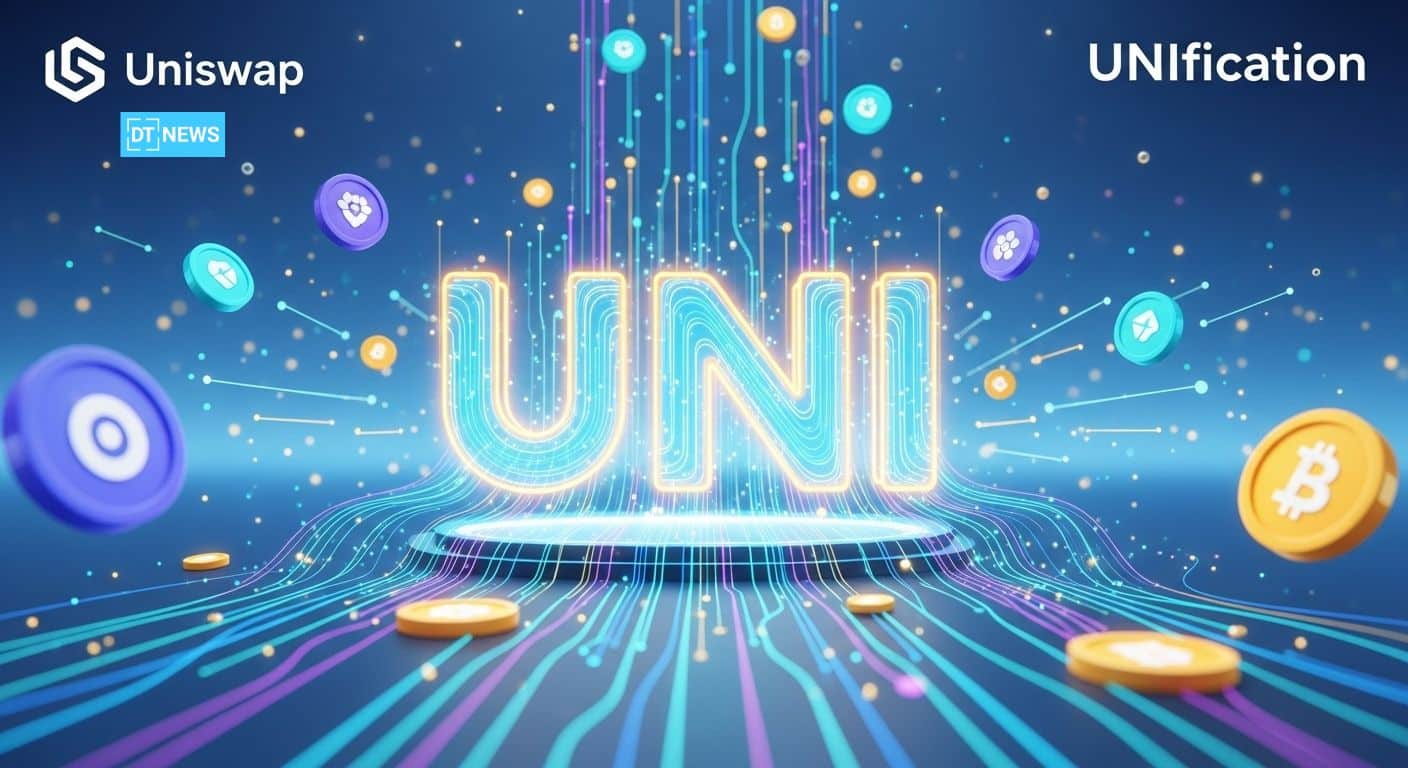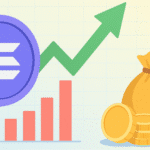This article was first published on Deythere.
UNI token just rallied 38% after the announcement of “UNIfication”, a governance and tokenomics proposal from Uniswap Labs and the Uniswap Foundation. The proposal includes a protocol-level fee switch, a 100 million UNI (16% of the current circulating supply) retroactive burn, and a governance and development team reorganization.
What the Proposal Means
Under the UNI token upgrade, the UNIfication proposal changes include:
Activating the protocol fee switch so that a portion of swap and sequencer fees go into a token-burn mechanism. Burning 100 million UNI from the treasury to simulate prior missed fee revenue (16% of circulating supply).
Redirecting sequencer fees from the Uniswap layer-2 network (Unichain) into the same burn pipeline.
Implementing Protocol Fee Discount Auctions (PFDA) to capture MEV (maximal extractable value) and boost liquidity provider returns.
Consolidating the Uniswap Foundation and Labs teams into a single organization focused on protocol growth and development, removing interface or wallet or API fees from Labs and shifting ecosystem grants to a quarterly “Growth Budget” of 20 million UNI starting 2026.
In effect, the UNI token upgrade aligns token-holder incentives with protocol usage, introduces scarcity while unlocking fee capture; the first time the protocol’s massive trading volume is tied to governance token value.
Market Reaction and Token Metrics
After the UNI token upgrade announcement, the market reacted quickly and strongly. The token went from the $7 level to about $10 in one day.
The circulating supply before the burn still sits at around 625-630 million UNI. With the proposed one-time 100 million UNI burn, the immediate supply is expected to drop by around 16%.
The governance timeline is now set; the fee-switch vote will go through a 22-day governance cycle with feedback, snapshot and on-chain vote phases.
Experts Projected Price for UNI Token
| Source | Timeframe | Forecasted Price Range or Average |
| Changelly | November 2025 | Minimum $5.99, maximum $8.61, average $7.30. |
| CoinCodex | November 2025 | Potential increase to $15.88. |
| DigitalCoinPrice | 2025 (end-year) | Average $11.10, maximum $12.90. |
| Cryptopolitan | 2025 ending | Average $8.79, maximum $10.54. |
How UNI Token Upgrade Changes the Value Proposition
Before, UNI was mainly a governance token with limited economic alignment to protocol revenue. With the UNI token upgrade, token-holders will now get recurring value flow from using the Uniswap protocol.
According to the proposal, protocol fees will now be activated and channeled into burning UNI, which reduces supply and therefore increases potential value per token.
PFDA auctions create a new revenue capture layer by internalizing MEV; thus, boosting liquidity provider returns while feeding the burn mechanism.
In short, the upgrade will turn UNI from a passive governance stake into an asset whose value is increasingly derived from protocol usage and scarcity, aligns the interests of holders, LPs and the protocol.
Conclusion
The UNI token upgrade is a big feat for Uniswap’s ecosystem and the UNI governance token. With the joint UNIfication proposal from Uniswap Labs and the Foundation, the crypto space is seeing one of the largest tokenomics overhauls of the cycle involving activating protocol fees, burning 100 million UNI, consolidating governance and linking token value to protocol usage.
The market is reacting well, rallying over 38% up, however, execution is key. This upgrade could change how DeFi governance tokens derive value and UNI holders will be watching rollout, burn and protocol growth closely.
Glossary
UNI token: The governance token of the Uniswap protocol, to vote on changes and upgrades.
Fee switch: A mechanism to redirect a portion of trading or sequencer fees to treasury or burn instead of liquidity providers.
Token burn: Permanent removal of tokens from circulation, by sending tokens to a “dead” address; reducing supply and increasing scarcity.
Protocol Fee Discount Auction (PFDA): A mechanism proposed by Uniswap under the UNI token upgrade where users bid UNI tokens for discounted transaction fees; the winning bid is burnt and captures MEV revenue.
Governance snapshot vote: A phase of decentralized governance where token-holders register to vote, often followed by an on-chain vote to enact changes.
Frequently Asked Questions About UNI Token Upgrade
What is the UNI token upgrade?
The upgrade is the UNIfication proposal put forward by Uniswap Labs and the Uniswap Foundation. It activates the fee switch, burns 100 million UNI, redirects sequencer fees from Unichain, and restructures governance and ecosystem development.
Will UNI holders now get protocol fees?
Indirectly. Under the proposal; a portion of fees will go into the burn mechanism, reducing supply rather than straight payouts. The value for holders comes from scarcity and alignment rather than direct dividends.
What still needs to happen for the upgrade to fully take effect?
The governance vote must pass, the fee switch must be flipped on v2/v3 pools (and later L2s), the burn must execute, and the Growth Budget must start. Execution will determine how big of an impact the upgrade will have.
What are the risks with the UNI token upgrade?
Challenges include LP pushback on fee changes, slower than expected burn, governance delays or low turnout, and competitive DEXs moving faster.



















































































































